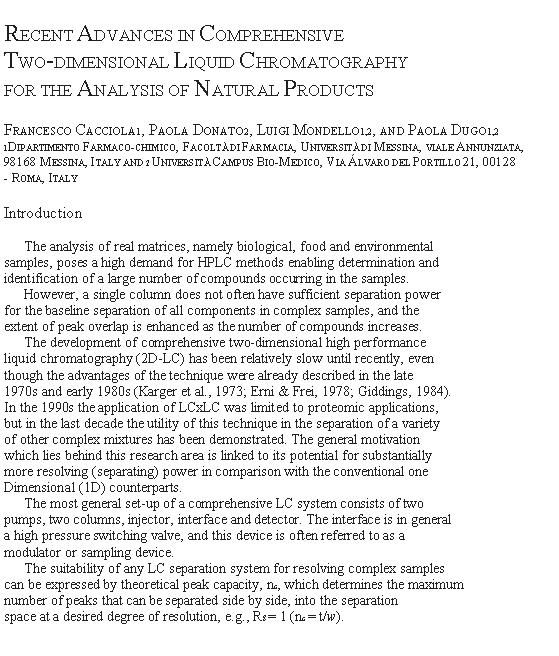



|
This was a sample page from the book to give you an idea of what is discussed. To learn more about Comprehensive Two-Dimensional HPLC, Buy the Book! |
|
Contact the author:
Prof. Dr. Luigi Mondello et al.
c/o AOCS Press P.O. Box 17190 Urbana, IL 61803-7190
Phone: 217-359-2344 E-mail: sales@aocs.com Web address: |